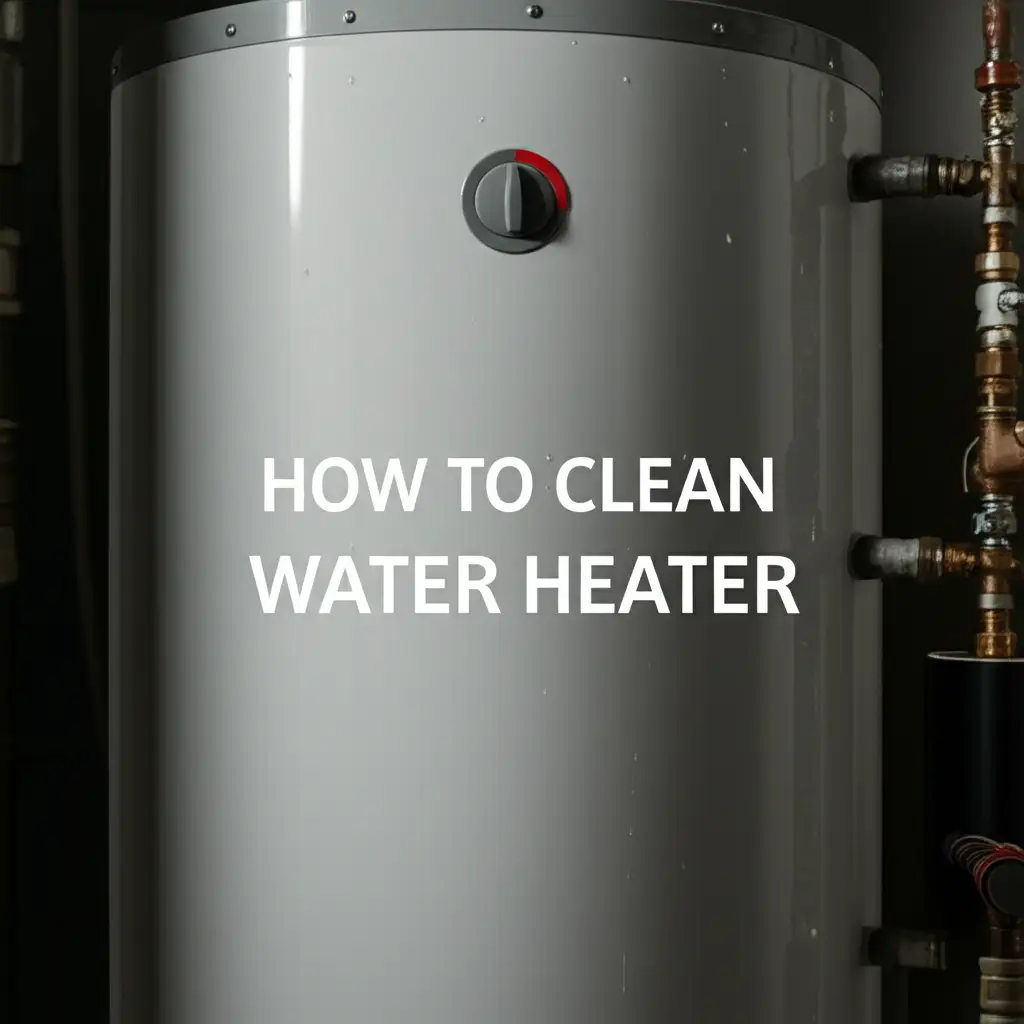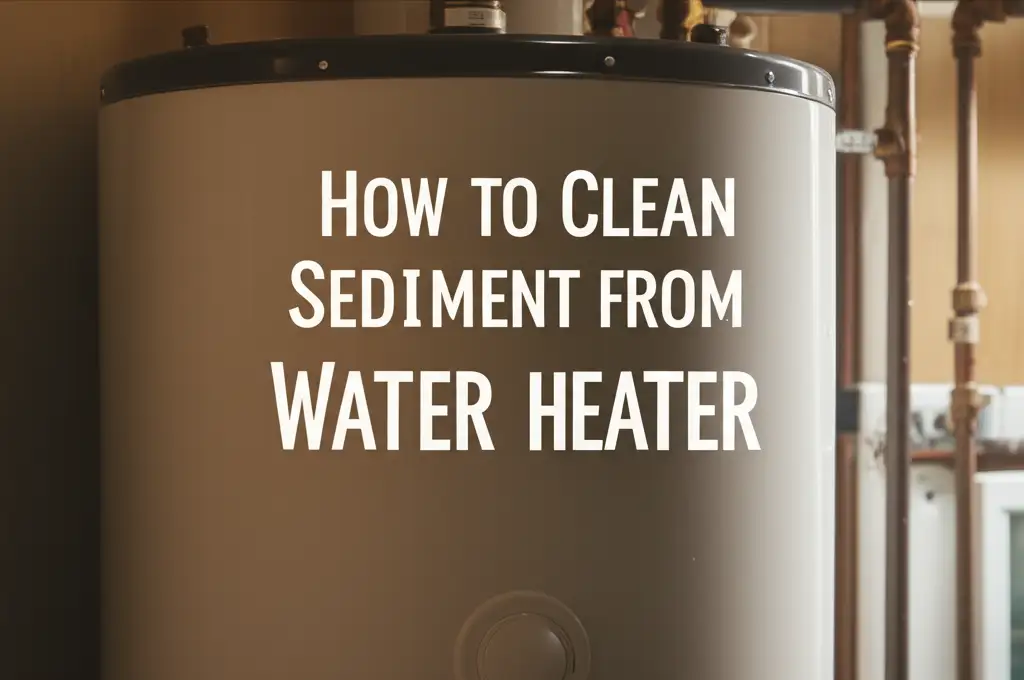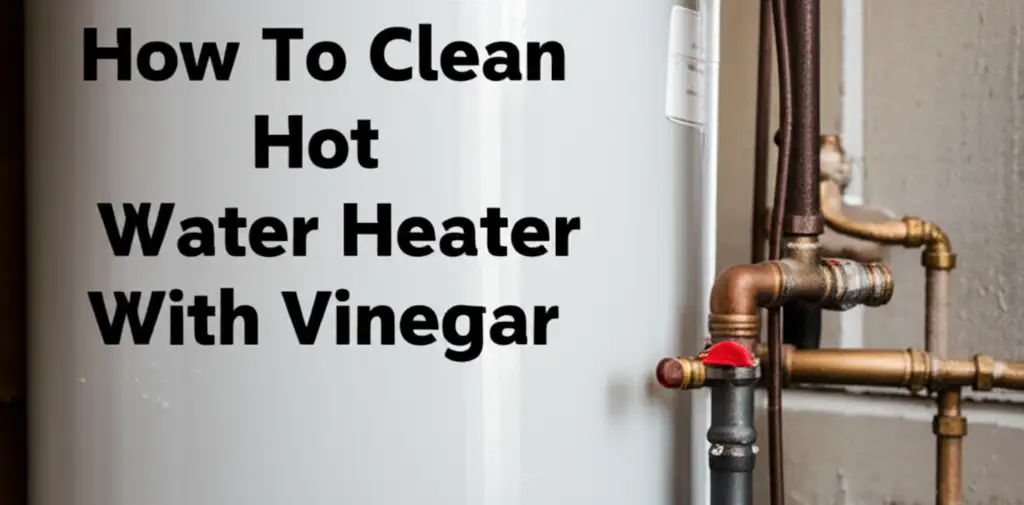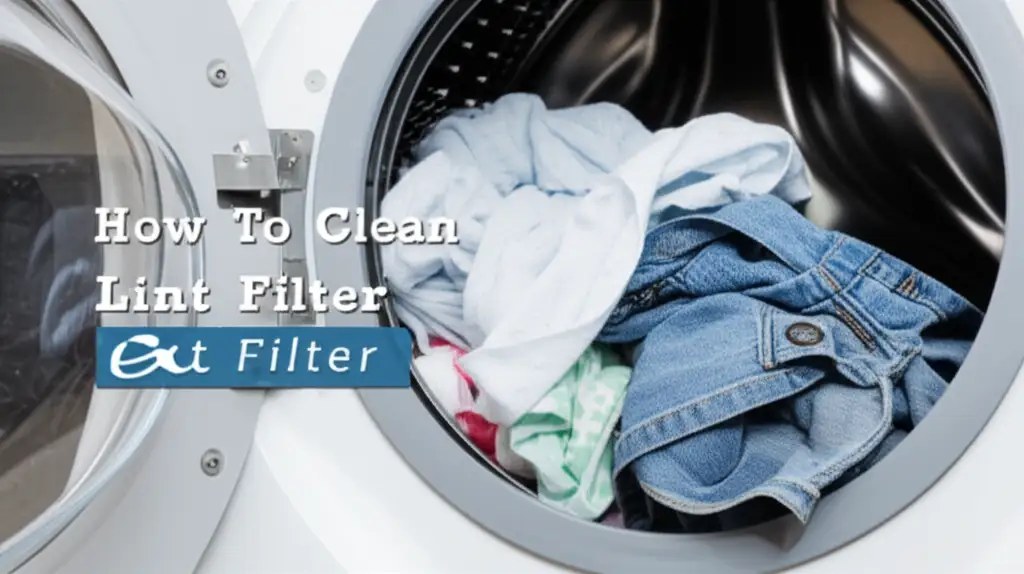· Home Maintenance · 12 min read
How To Clean Water Heater

How to Clean Your Water Heater: A Complete Guide
Imagine stepping into a cold shower. Or perhaps you notice your hot water running out faster than usual. These are common signs your water heater needs attention. Cleaning your water heater helps it work better. It also helps it last longer.
Many homeowners overlook this important task. Regular maintenance, including cleaning, keeps your appliance efficient. It prevents costly repairs down the line. I will show you how to clean your water heater thoroughly. This guide covers everything from preparing for the job to common issues and ongoing care.
Takeaway
- Regularly flush your water heater to remove sediment.
- Turn off power and water supply for safety before starting.
- Use a garden hose to drain the tank completely.
- Consider using vinegar for stubborn mineral buildup.
- Perform annual cleanings to extend your water heater’s life.
Main Query Answer
To clean a water heater, first turn off its power and water supply. Connect a hose to the drain valve and empty the tank to remove sediment. For tankless models, use a descaling solution to flush the system. Regular cleaning improves efficiency and prevents common issues.
Why Cleaning Your Water Heater Matters
Your water heater works hard every day. It heats water for showers, dishes, and laundry. Over time, mineral deposits build up inside the tank. This buildup is called sediment.
Sediment comes from minerals in your water supply. Hard water has more minerals like calcium and magnesium. These minerals settle at the bottom of the tank. Sediment causes many problems for your water heater.
Sediment reduces efficiency. The heating element must work harder to warm the water. This increases your energy bills. It also strains the unit. Sediment can cause strange noises, like popping or rumbling. This happens when water gets trapped under the sediment and boils. Removing sediment buildup helps your water heater run smoothly. It extends the life of your appliance.
Understanding Your Water Heater Type
Before you start cleaning, you need to know your water heater type. Most homes have either a tank-style or a tankless water heater. The cleaning process differs greatly for each. Knowing your model helps you choose the right steps.
Tank-style water heaters are large cylinders. They store and heat a fixed amount of water. Sediment collects at the bottom of these tanks. Cleaning them involves flushing out this sediment. This is the most common type of water heater people need to clean.
Tankless water heaters are compact units. They heat water on demand. They do not have a storage tank. Instead, water flows through a heating coil. These units can still build up mineral deposits, but they do not collect sediment in the same way. Cleaning a tankless water heater involves descaling the coils. This prevents blockages and ensures efficient heating.
Gathering Tools and Ensuring Safety Precautions
Cleaning a water heater requires specific tools. Safety is also important. Always prioritize your safety before starting any maintenance task. Gather everything you need first. This makes the job easier and faster.
Essential Tools
You will need a few common household items. Make sure you have these ready.
- Garden Hose: You use this to drain the water heater. It should be long enough to reach a drain or outdoor area.
- Bucket: A bucket helps catch any residual water. It is useful for testing the drain valve.
- Wrench or Pliers: You might need these to open the drain valve. Some valves are stiff.
- Flathead Screwdriver: This is often needed to turn the power off at the circuit breaker.
- Wire Brush (optional): For cleaning around the outside or connections if needed.
Crucial Safety Steps
Safety comes first. Follow these steps carefully to avoid accidents.
- Turn Off Power: For electric water heaters, switch off the breaker in your electrical panel. For gas water heaters, turn the gas valve to the “OFF” position. This prevents the heating element from burning out or gas leaks.
- Shut Off Cold Water Supply: Locate the cold water inlet valve at the top of your water heater. Turn it clockwise until it is completely off. This stops new water from entering the tank.
- Open Hot Water Faucet: Go to a hot water faucet in your home, like a bathroom sink. Turn on the hot water tap. This relieves pressure inside the tank. Let it run until water stops flowing. This step is important for proper drainage.
- Wear Protective Gear: Gloves and eye protection are a good idea. Water can be hot, and sediment can splash.
Step-by-Step Guide to Flushing Your Tank Water Heater
Flushing your tank water heater is the most important part of cleaning. This process removes the accumulated sediment. I will walk you through each step. Follow these instructions for a thorough flush.
1. Connect the Hose
Attach one end of your garden hose to the drain valve. The drain valve is usually located near the bottom of the water heater. Ensure the connection is tight. Place the other end of the hose in a floor drain, a large bucket, or outside where water can safely drain. Avoid draining onto your lawn unless you know your water is free of harmful chemicals.
2. Open the Drain Valve
Use your wrench or pliers if needed. Slowly open the drain valve. You will hear water start to flow out. Be careful as the initial water can be hot. Let the water drain completely. This can take 15 to 30 minutes, depending on your tank size and sediment amount.
3. Flush Until Water Runs Clear
As the tank drains, watch the water coming out of the hose. It will likely appear cloudy or gritty at first. This is the sediment. Once the tank is nearly empty, open the cold water supply valve for short bursts. This helps stir up any remaining sediment. Let the water run through the drain hose until it comes out clear. Repeat this process until you see no more debris. This ensures a thorough sediment removal.
4. Close Valves and Refill Tank
Once the water runs clear, close the drain valve on the water heater. Disconnect the garden hose. Then, open the cold water supply valve fully. You will hear the tank begin to refill. Go back to the hot water faucet you opened earlier. Let it run until a steady stream of water flows out. This indicates the tank is full and all air is purged.
5. Restore Power
After the tank is full, you can restore power. For electric units, flip the circuit breaker back on. For gas units, turn the gas valve to the “ON” position and relight the pilot light if necessary. Your water heater will now begin reheating the water. This process helps your heater work more efficiently. It also prolongs its life.
Addressing Stubborn Sediment and Hard Water Issues
Sometimes, flushing alone is not enough. Hard water areas often experience more severe mineral buildup. This can lead to very stubborn sediment. You might need a stronger approach. Using white vinegar is an effective way to dissolve tough mineral deposits.
Descaling with Vinegar
Vinegar is a natural acid. It breaks down mineral deposits. This method is especially helpful for improving the efficiency of your water heater. It also helps if you have a hot water heater with vinegar buildup.
- Drain the Tank (Again): Follow the steps above to completely drain your water heater.
- Close the Outlet Valve: After draining, close the cold water inlet valve. Also, close the hot water outlet valve at the top of the tank. This prevents the vinegar from flowing into your home’s plumbing.
- Add Vinegar: Use a funnel to pour several gallons of white vinegar into the tank. You can use the hot water outlet connection for this. The amount of vinegar depends on your tank size and sediment level. A good starting point is 2-4 gallons for a standard tank.
- Let it Soak: Allow the vinegar to sit in the tank for several hours, or even overnight. The longer it soaks, the more effective it will be at dissolving stubborn deposits. Do not turn on the power during this time.
- Flush Thoroughly: After soaking, open the cold water inlet valve slightly. This pushes the vinegar out through the drain valve. Flush the tank thoroughly with fresh water until no vinegar smell remains. This ensures all the dissolved minerals are gone. Then, refill the tank and restore power as usual.
Preventing Future Buildup
Preventing buildup is easier than cleaning it. Consider these options:
- Install a Water Softener: If you have very hard water, a water softener system helps. It removes minerals before they enter your home’s water supply. This greatly reduces sediment formation in your water heater and other appliances.
- Install a Whole-House Water Filter: A water filter can capture larger particles and some minerals. This lessens the load on your water heater. It helps maintain cleaner water overall.
- Regular Flushing: The best prevention is regular flushing. Make it a routine. Flushing your water heater annually, or even semi-annually in hard water areas, keeps sediment at bay.
Post-Cleaning Checks and Regular Maintenance Tips
You have cleaned your water heater. Now it is time to perform some checks. This ensures everything is working correctly. Ongoing maintenance also extends the life of your unit.
After the Flush
- Check for Leaks: Inspect all connections. Look for any drips around the drain valve, inlet, and outlet pipes. Tighten any loose connections.
- Monitor Water Temperature: Once the tank refills and reheats, check your hot water temperature. Ensure it is at your desired setting. You might notice improved hot water pressure or consistency.
- Listen for Sounds: Pay attention to any unusual noises. A well-flushed tank should operate quietly. Popping or rumbling sounds should be gone.
Ongoing Maintenance Routine
Regular maintenance goes beyond just flushing. It helps keep your water heater in top condition.
- Annual Flushing: Plan to flush your tank water heater at least once a year. If you live in an area with very hard water, consider flushing it every six months. This prevents major sediment buildup.
- Test the T&P Valve: The Temperature and Pressure (T&P) relief valve is a safety device. It releases water if pressure or temperature gets too high. Test it annually. Place a bucket under the discharge pipe. Gently lift the lever for a few seconds. Water should flow out. If it does not, replace the valve immediately. This valve is crucial for safety.
- Inspect the Anode Rod: The anode rod attracts corrosive elements in the water. It protects the tank lining. Over time, it corrodes away. Inspect it every few years. Replace it if it is heavily corroded or nearly gone. This extends the lifespan of your tank.
- Insulate Your Water Heater: Adding insulation to older water heater tanks helps retain heat. This reduces energy loss. You can buy insulation blankets specifically for water heaters. Insulating hot water pipes also helps.
When to Call a Professional
While much water heater maintenance is DIY-friendly, some situations require professional help. Knowing when to call an expert saves you time and prevents costly mistakes.
- Persistent Leaks: If you find leaks after flushing, and tightening connections does not stop them, call a plumber. A persistent leak can indicate a corroded tank. This often means the unit needs replacement.
- No Hot Water After Cleaning: If you follow all steps and still get no hot water, a component might be faulty. This could be a heating element, thermostat, or gas valve. These parts require professional diagnosis and repair.
- Pilot Light Issues (Gas Heaters): If you cannot relight the pilot light, or it keeps going out, do not keep trying. This could indicate a gas supply issue or a faulty thermocouple. Gas problems are dangerous. Call a qualified technician immediately.
- Strange Smells or Sounds: Foul odors (like rotten eggs) might suggest bacterial growth in your tank. Loud banging or grinding noises after a flush could point to a severe sediment problem or a failing heating element. A professional can diagnose these issues safely.
- Valve Problems: If the drain valve is stuck, or the T&P valve does not work, do not force it. Damaging these valves can cause bigger problems. A plumber has the right tools and expertise to address them.
- Tankless Water Heater Complexities: Descaling a tankless water heater often involves specialized pumps and solutions. If you are not comfortable performing this task, a professional can do it. They ensure the job is done right without damaging the unit.
FAQ Section
How often should I clean my water heater?
You should clean your tank-style water heater at least once a year. If you live in an area with hard water, consider cleaning it every six months. Tankless water heaters generally need descaling every 1-2 years, depending on water hardness.
What are the signs my water heater needs cleaning?
Common signs include reduced hot water supply, strange noises like popping or rumbling from the tank, cloudy or rusty-colored hot water, and a noticeable increase in your energy bills. These indicate sediment buildup.
Can I clean my water heater myself, or do I need a professional?
Many homeowners can clean a tank-style water heater by flushing it. The process is straightforward. However, if you are uncomfortable with the steps, have a tankless unit, or encounter persistent issues, calling a professional is a safer choice.
What happens if I do not clean my water heater?
Ignoring water heater cleaning leads to several problems. Sediment builds up, reducing efficiency and increasing energy costs. It shortens the lifespan of the unit and can lead to expensive repairs or premature replacement. You might also experience inconsistent hot water.
How long does it take to clean a water heater?
Flushing a tank-style water heater typically takes about 30 to 60 minutes. This includes draining and refilling the tank. If you need to use vinegar for descaling, the soaking time adds several hours, but the active work time remains similar.
Is cleaning a water heater safe?
Cleaning a water heater is safe if you follow all safety precautions. Always turn off power and water supply first. Ensure the hot water faucet is open to release pressure. Wear appropriate protective gear. If you are unsure at any step, stop and seek professional help.
Conclusion
Cleaning your water heater is a vital maintenance task. It keeps your appliance running well. It extends its useful life. Regular cleaning prevents frustrating issues like cold showers and high energy bills. By following my guide, you can successfully clean your water heater. You will remove harmful sediment and ensure efficient operation.
Remember to prioritize safety. Turn off power and water before you begin. Make flushing your water heater an annual routine. In hard water areas, consider more frequent cleaning or adding a water softener. This simple maintenance step saves you money. It also provides reliable hot water for your home. Your clean water heater will thank you with consistent performance.
- water heater maintenance
- sediment removal
- appliance cleaning




